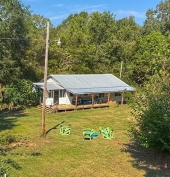
 2
2








 5
5




Creating sustainable life, beauty & food (with lots of kids and fun)




Jim Fry wrote:"Start up costs" are not the same as the cost of raising enough of any food or animal to be able to make enough money to either live on or make it worthwhile to even try. But more importantly, in your question you make several assumptions that aren't necessarily true, "perfect crop, small cost and big profit". What makes a "perfect crop" is raising something you truly love. And with which you can satisfy a real need, including such things as food to eat, food to sell, plants to use as medicine, plants for animal feed, plants for mulch, etc. Growing something at small cost usually means not a whole bunch of profit. It's often a matter of scale. It costs more to sell more. And just because you see something for sale at a high price doesn't mean you can raise the same thing for a similar price.
What I would do if I was starting out again is do a whole lot more research. I have sold acres of organic produce, with thousands of plants, and thousands of eggs, and hundreds gallons of maple syrup & honey to hundreds of families through a Whatley style CSA, regular CSA and Farm Share CSA. I've sold to major grocery stores, several natural foods co-ops, our non-member farm stand, and a Natural Food store. It took time, it took experience, it took lots of work, and it took lots of mistakes. But I loved it, so it all worked out. We've done a bit of what you are suggesting/asking.
So, my suggestion to you is to find the thing you are actually passionate about. Research the heck out of it. Get some experience at a farm or business where they are doing similar to what you want to do. Do a consumer survey to be sure you have a market. Try to do something better than anyone else can do. Then have at it.
 2
2




Living a life that requires no vacation.




"It might have been fun to like, scoop up a little bit of that moose poop that we saw yesterday and... and uh, put that in.... just.... just so we know." - Paul W.




 3
3
















Permaculture...picking the lock back to Eden since 1978.
Pics of my Forest Garden




Greg Martin wrote:Any suggestions for perennials that would be great for this? Ones that you can easily gather piles of seeds from that will sprout into great microgreens?




 .
.Permaculture...picking the lock back to Eden since 1978.
Pics of my Forest Garden
 2
2










Creating edible biodiversity and embracing everlasting abundance.
 1
1








John Daley Bendigo, Australia The Enemy of progress is the hope of a perfect plan
Benefits of rainfall collection https://permies.com/t/88043/benefits-rainfall-collection
GOOD DEBT/ BAD DEBT https://permies.com/t/179218/mortgages-good-debt-bad-debt

|
Please enjoy this holographic presentation of our apocalyptic dilemma right after this tiny ad:
The new kickstarter is now live!
https://www.kickstarter.com/projects/paulwheaton/garden-cards
|








